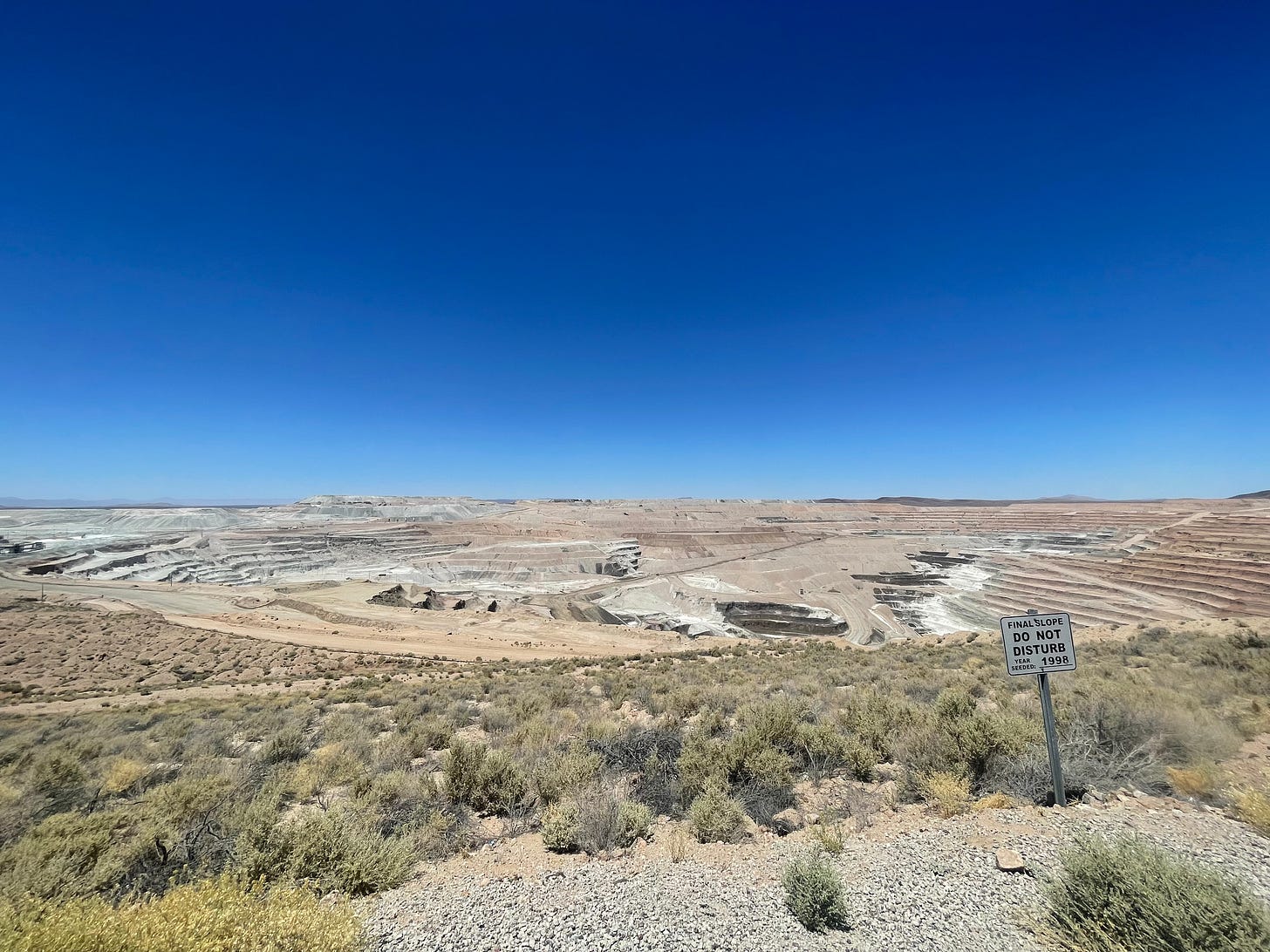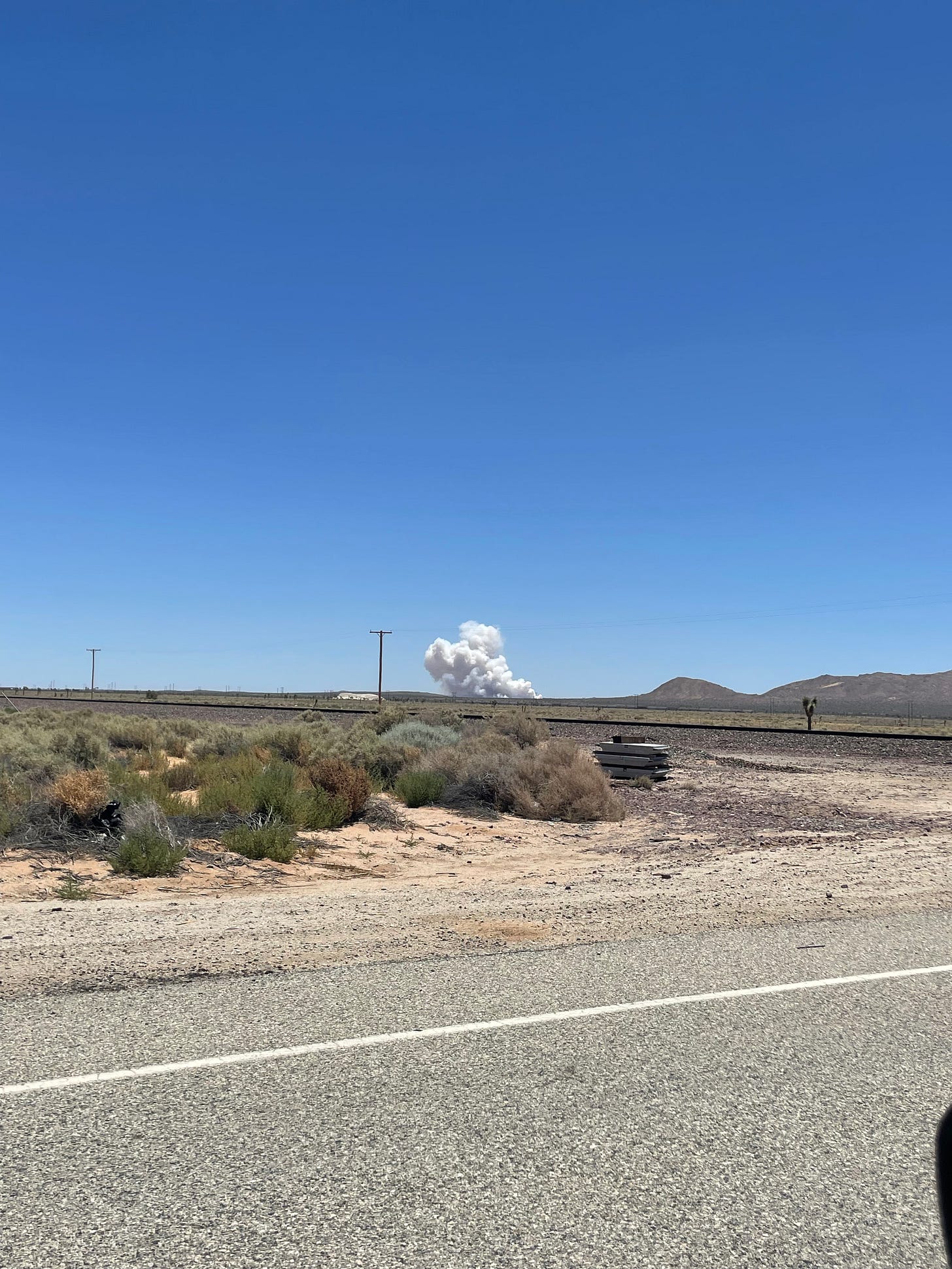For as long as I can remember I have been fascinated by desert towns. Desolate streets with evocative views of stretching chaparral punctuated by a mountain range in the distance. When I was younger I would drive thru these places just to see what was going on. I wondered who could possibly live out here, how did they come to exist, and most importantly, why were they still there? It would puzzle me and that is how I found Boron.
Boron exists in the Mojave. A freight track cuts along the side of the main street, 20 Mule Team Road, and lasers off into the vast expanse of the desert. The only reason it exists is because a few miles away a borax deposit was discovered and mining began. Borax is one of those minerals found in a shockingly wide array of things from enamels and fiberglass to common household cleaning products. It’s one you’ve most likely never heard of but one you’ve definitely come into contact with.
It’s a lonely place, a population bordering 2000, with a sprawl of only a few miles. There is one main intersection where most the traffic goes thru and the local grocery store sits on a corner across from the few restaurants available. When I drove in to town I met a waitress at the 20 Mule Cafe which sits at the central intersection. Across the street is the Boron Museum and its large outdoor area full of rusting metal machines that were once used for various mining operations. It’s dusty enough that you half expect to see a tumbleweed.
The waitress, Chloe, was just shy of 21. She served me a Western omelette that was smothered in sour cream and what looked like a form of guacamole handing me the plate with a tattooed hand, a large unfinished rose. All along the walls were different gaudy ceramic parrots and the customary fading posters typical of in most roadside diners. I was the only one dining.
“So are you from Boron?” I asked.
“No, but I’ve been living here for 5 years now.”
“Oh, where’d you grow up?”
“San Luis Obispo.” I asked why she’d come here then and she explained. “My mom. Before I graduated high school she had a friend living out here and decided to come. She left before I even turned 18 though, so now I’m stuck out here!”
We chatted for awhile about the state of Boron. Like most small towns in America it had been eroded by drugs. Fentanyl had even come to town. Chloe told a story about how she’d recently had to kick a woman out who was caught smoking it in the bathroom. When I asked if she’d ever leave she said definitely. Bora Bora would be her destination of choice, where there was blue water as far as you could see.
“So why not leave?”
“I can’t. I care for my uncle. He’s in his late 70’s and he’s got no one else. Plus I’ve got my dogs.” She scrolled thru her phone showing me all 13 of her pit bulls.
As I was getting ready to leave she told me a story about how recently there had been a group of 13 to 14 year olds hiding out in Boron. They had escaped the foster system from somewhere nearby, most likely Barstow or Victorville, and a child hunt had ensued. The police eventually found them and placed them back in the system, but not before they had eluded capture for a few days. Boron seemed to be a catchall. A quarter of the town was made up of inmates who’d been released from the nearby state prisons, just looking for a place off-the-grid. The local jail was boarded up and the police station defunct, only a periodic drive-thru by the county sheriff’s kept the law in sight.
I finished my meal, paid up, and headed across the street to the Boron museum. There I met Jerry, the museum’s curator and tour guide. He was a short, round man in a large day-glo pink tank top and cargo shorts. He had the deep tan characteristic of Mojave dwellers. Years spent in the direct sun, brutally dry with little shade for respite. The museum was just a few rooms built from those mobile home style offices that get thrown up for quick construction projects. He gave me a history lesson on the tour.
Originally the 20 Mule Team had been from Death Valley to Mojave. There a deposit had been discovered in the mid 1800’s and those who’d made it to California, initially looking for gold, had decided to try mining a different mineral. Large rickety carts would be pulled by those mule teams across the desert to be loaded onto steam trains bound for the ports. After a couple decades the large deposit was discovered close by and Boron, originally Amargo, was founded. It boomed.
In the museum was small diorama depicting what the city had looked like in the fifties. It was hard to imagine but it looked like any other American suburb, complete with tiny grocery store, movie theater, and shops that lined 20 Mule Team Road. Then it all changed, the mine was eventually bought out by a large global outfit, Rio Tinto, and things began to decay like most other post-industrial hamlets.
Once the tour was finished he told me to go checkout the actual mine where there was a visitor center. Initially I was skeptical as to what that could be but as I drove the few miles down the road I saw the signs indicating there indeed was one ahead. At the top of a massive dirt berm that must’ve been made from the leftovers of the mining operations sat two quonset huts. As I stepped in, I was blasted by AC, grateful for the cool. The interior was painted a dark gray and exhibits filled the room, models of the modern refinery equipment, a display with all the products containing borax, different rocks containing the many mineral varieties of borax with long chemical names, and a gift shop.
An old man in suspenders and thick glasses greeted me. The “host” as his name tag called him was named Jim. He’d been working for the mine since the 1960’s. He eyed me over his spectacles and launched into talking about the mine before I had a chance to ask. We wandered around and he explained the process of how it’s mined, the original companies buy-out by Rio Tinto, the ups and downs of Boron, and just how many things borax went into. Then he invited me to watch a video.
I stepped into a hall towards the back with a large black curtain at one end and a TV monitor on the other, with folding chairs at least 20 deep, but only me and an older couple passing thru sat to watch. For 15 minutes I was treated to a standard corporate HR video from the Rio Tinto mining company, complete with happy employee interviews and gushing commentary about the future of this mine and the company. It felt like I’d stepped into a secret desert mining cult and this was my indoctrination. But to really accent it, once the video stopped rolling, Jim strolled back in and hit a button. Behind me the black curtains opened, movie theater style, to reveal the giant pit mine (largest in the US) that stretched behind us.
I’d be lying if I didn’t admit that the reveal worked well. As me and the older couple stepped over to look out across the giant man-made valley Jim explained the size. Deep at the ground level I saw trucks driving too and fro like ants. But it was deceptive. Those trucks are easily the size of a two story house, complete with a staircase to get into the driver’s seat. The mine was cut like a layer cake, sheer walls to flat roads that kept spiraling down and down. Jim explained that each wall was 50 ft high. The scale of it was hard to comprehend.
The mining operation was in full effect. I watched as the trucks were loaded and drove back up to the refining facilities that lay to the west. Outside was a tiny overlook. I walked up to get the full view. It was breathtaking. And honestly, sickening. It was like looking out over the Grand Canyon, except there was no natural wonder to the place, just the continued extraction from the earth to provide us with more everyday mundane products. A man-made wonder without any desire for beauty. Pure utility. But backdropped with an even vaster view of the Mojave stretching into the distance. To think of something this scale being dwarfed by it’s natural setting was hard to comprehend.
I left there feeling humbled. The hardest part for me to grasp though was the indifference of it. This town, which had been brought into existence purely by the necessity of this mine, was slowly dying. The extraction of resources had come not just from the land, but from the people that created it, and the most that was given was a position as the tour guide for the new corporation’s visitor center. Jim explained that a few decades back the Rio Tinto mining company had decided to stop hiring from Boron, instead outsourcing from the further out, but more populous desert communities. All of this with the idea that locals were too enmeshed and it would cause issues. What those issues could be he didn’t know.
The desert is harsh. It is an unforgiving landscape where only the hardiest of plants and animals survive. Buildings left will be slowly eroded back into the landscape till nothing is left but a concrete foundation. The Rio Tinto mining company says it has enough there to mine until at least 2050. And then it will be anyone’s guess what will become of it. Just a giant pit left in the desert with the ghost town that once supplied it close by. We’ll be able to judge a derelict town’s age by knowing what industry had once boomed and then dried up there.
As I drove back home, in the distance a massive fire had broken out. The clouds curled up into the sharp blue sky and the wind howled into my open window.







